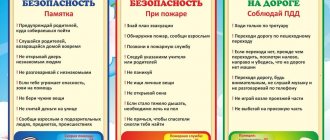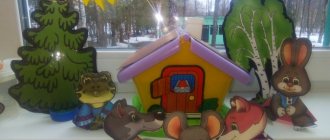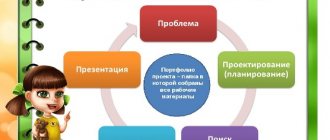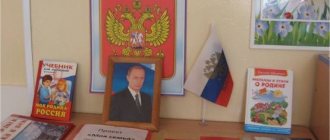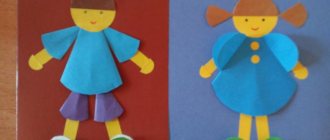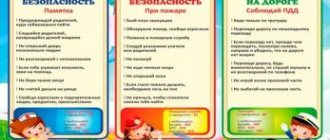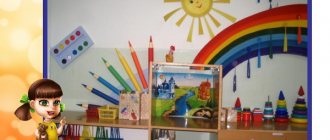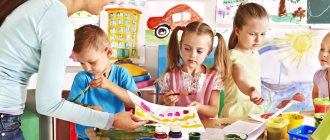Preparing a project at school and the student’s ability to competently present their work are the result of the requirements of a modern educational program. In modern schools, projects are required to be completed on a computer. How to create a school project.
It is assumed that project activities reveal in the child the ability to think and act creatively, develop independence in searching for information and processing it, teach the child to prepare a presentation and present it to the public.
To understand where to start a school project, you need to choose its type. School projects are:
- research - study, consider the topic from different angles; is prepared as a scientific study (a hypothesis is put forward and tested);
- practical, practice-oriented - the result is a solution to a specific problem that can be used in life;
- creative - the result is a creative product, an edited video, a poster, a theatrical performance, a new educational game, a sports game;
- informational - contain the results of collecting information, which is then presented to the public;
- role-based - projects in which roles are distributed and rules of interaction between participants are established. The result of such work becomes known only upon completion; students try themselves in new roles and situations, learn to resolve conflicts while in the image of the chosen role.
Materials, presentation, what the school project consists of and what it looks like will directly depend on the type of project chosen.
How to write a project at school
It all starts with choosing a topic and understanding the end goal. It must be understandable, clear and concise. In order for the work to progress quickly, the student must be interested in the topic. Otherwise, there will be no benefit from project activities. It will not be possible to successfully defend a project that is not even interesting to its creator.
Stages of work:
- Preparatory. We decide on a topic and purpose.
- Planning. We find out what is needed for the project at school, what sources of information we will work with, how we will collect and analyze it. We decide in what form we will present the results of the work.
- Study. We collect and clarify information and carry out research tasks.
- Conclusions. We analyze the information and formulate conclusions.
- Decor. Teachers of each specific educational institution put forward their own requirements for how to draw up projects at school and provide design samples.
At the planning stage, they decide in what form to present the information. Then it is determined what program is needed to create a school project on a computer. At school, for projects within the classroom, it is enough to use the graphic editor Word. They type text in it and supplement it with pictures.
Digital solutions
Several online resources will be of great help to teachers: the School Projects Laboratory being developed by Enlightenment (will be available in the fall of 2021) and Proobskills.
Work in the School Projects Laboratory includes 3 stages:
- The simplest level: a novice designer needs to fill in the empty fields of the template with a theme and bring the work to its logical conclusion;
- The second stage is a little more difficult. Here the child will have to adjust the structure of the project or research himself;
- The third level, where the student creates his own project independently, and the teacher acts as a curator.
The uniqueness of “Proobskills” lies in the provision of checklists to all participants. This methodical and meticulous approach has undeniable advantages:
- The relevance of the research will be justified at the initial stage of work;
- A clear and understandable formulation of the technical specifications, which will simplify the process of its implementation;
- Selection of required literature. During preparation, the child will learn to independently cut off unreliable sources of information;
- Tracking all the nuances of the research process. Using the designer’s checklist, the teacher will see how the work is progressing, what mistakes have been made, where the knowledge base or perseverance was lacking;
- A step-by-step analysis of the progress of work, its adjustment and final protection will enhance the quality of the result obtained.
How to register a project
Design of a project in junior classes
The younger the class, the less text and more pictures. After all, the child not only submits a printed project, but must also be able to tell what is written in it and answer questions.
Project structure:
- Title page. At the very top they write the full name of the educational institution. In the middle of the sheet, by . Below, the name of the project is written in bold, large font. Below it, in the right corner, indicate who completed it: the student’s first and last name, class. Then the manager: last name, first name and patronymic. At the bottom in the middle of the sheet write the city and year of the project.
- The table of contents is placed on the second sheet.
- Then comes the introduction. Goals and objectives are written here.
- Main part. In this part, the topic is revealed, you can write step by step: “I started my work with...”, “Then I started to...”, “In my work I encountered such problems...”.
- Conclusion.
Designing a project in high school
The older the student, the more stringent the requirements for the content, quality, quantity of information displayed in the project, and for its design.
Individual final project at school - from idea to presentation
An individual final project was invented so that the student could once again demonstrate his knowledge. The project could be a website created independently or a tour of the school museum. Geography teacher Maxim Muromtsev explains what projects are like and how to create your own.
Useful Mela newsletter twice a week: Tuesday and Friday
SUBSCRIBE
A project is a plan, idea, image, embodied in the form of description, justification, calculations, drawings that reveal the essence of the plan and the possibility of its practical implementation.
Why do you need an individual final project?
First of all, for self-esteem. Who am I, what can I do and what do I want? The final project gives you the opportunity to realize yourself and learn something new, to move one step further in your development.
Work on a project requires clear organization. There are documents that define the order of implementation and criteria for evaluating activities. It is worth studying them carefully together with the teacher and parents! Here is a sample list:
- Regulations on project activities of students within the framework of the implementation of the main educational program of basic general education of a municipal educational institution;
- assessment card of the student’s individual final project at the level of basic general education;
- instructional materials for the student and a self-assessment card;
- diary of work on the project;
- consultation plan with a teacher or tutor.
1. Find an idea
Listen to yourself. What do you want to do for your own development? Master new technologies and gain new knowledge, or you want to improve existing skills, or maybe you want to use your talent to create something new or original.
What to do if there are a lot of ideas? Evaluate them all and think about how your activities will benefit you and others. Come to a compromise between “interesting” and “useful.” What to do if you have no ideas at all? Consult with your teacher, parents, classmates, but remember that forced work will not bring any benefit. If you decide to implement someone else’s idea, then try to bring your own, original one.
Project types:
- Research projects have a structure close to genuine scientific research. They involve argumentation of the relevance of the topic, definition of the problem, subject, object, goals and objectives of the study. It is necessary to put forward a research hypothesis, designate research methods and conduct an experiment. The project ends with a discussion and presentation of the results, formulation of conclusions and identification of problems for further research.
- Information projects are projects designed to teach how to obtain and analyze information. Students study and use various methods of obtaining information (literature, library collections, media, databases, including electronic ones, methods of questioning and interviewing), processing it (analysis, generalization, comparison with known facts, reasoned conclusions) and presentation (report, publication, posting on the Internet or local networks, teleconference).
- A practice-oriented project also involves a real result of the work, but unlike the first two, it is of an applied nature (for example, designing an exhibition of rocks for a geography classroom). The type of educational project is determined by the dominant activity and the planned result. For example, a project to study a local area can be of a research nature, or it can be practice-oriented: prepare an educational lecture on the topic “Mountains (or plains) of the Earth.” The preparation of such a project, in addition to the actual substantive content, will include issues of analyzing the audience and the features of addressing it.
- A game project is when participants take on certain roles determined by the nature and content of the project in order to attract the public to solve the problem of the project.
2. How should the project turn out?
The result of working on a project can be either a finished object or information (textbook, website, research results) or an original presentation of your idea (layout, model, drawing, business plan).
Types of project activity products:
- Website;
- video film;
- exposition and tour of it;
- collection;
- model, layout;
- piece of art;
- multimedia product;
- staging;
- holiday;
- directory
- tutorial
- excursion or interactive excursion;
- business plan;
- map, atlas;
- package of recommendations;
- guide;
- directory;
- tutorial.
3. Involve parents
An individual project is a responsible and significant event. Don't be shy to ask your parents for help. Don't refuse help from other people. Your loved ones and friends will support you and help you see the advantages or disadvantages that you yourself did not see. They say that working together unites!
4. How to evaluate your work
Read your Project Diary. Remember the difficulties and how you overcame them. Answer the questions in the questionnaire.
“What did you learn or improve while working on the project?” ABOUT!
- Plan your activities, allocate time
- Organize your workspace
- Finish everything to the end
- Obtain information and select necessary for work
- Highlight the main, essential
- Design the project correctly
- Achieve your goals despite mistakes and disappointments
- Listen to different opinions
- Prove your point
- Create a presentation
- Other
Interview questions after finishing the project
Now that it's finished, what are your initial thoughts on this project as a whole? Are they mostly positive or negative?
- If the result is positive, what specifically comes to mind?
- What were the most interesting discoveries you made while working on this project? About the problem? About Me? About others?
- Identify some of the most difficult parts of working on a project. What is the reason for the difficulty?
- What did you learn while working on the project?
- When did you realize that you had found the final and best solution?
- Do you think your project is relevant, does it relate to real situations and problems?
- How helpful were the consultations with the teacher? Assess your degree of independence.
- How could you help others during the project?
- What have you discovered? What are your greatest strengths? What are your biggest weaknesses?
- What would you do differently if you were starting over again?
- How will you use what you learned in the future?
5. How to organize project protection
Complete the necessary accompanying documents. Create a presentation in which you present all the stages of work on your project. Clearly formulate the goals and objectives of the project. Tell us about your difficulties and achievements. Tell us about your plans for the future.
Creative project and work plan
- In this section, we will look in detail at an approximate plan for a creative project in technology, fine arts and music for school students, which will help to competently complete the design work and carry out the correct design of an individual or group creative project.
- We will also determine what must be contained in each item of the student’s creative work plan in order to clearly divide the text of the project work into sections.
- The main points of the plan for carrying out project work at school are the design of the title page, the content of the project, introduction, theoretical and technological parts, economic and environmental justification, evaluation of the product and its advertising, conclusion, literature and applications.
Example of a project in a preschool educational institution
How to organize activities correctly? In order to answer this question, we present ready-made projects in kindergarten. For example, in some preschool institutions there are special speech therapy groups.
The project on the topic “Onions: tasty, healthy, interesting” is intended to develop the ability to find certain information, write reports, and design newspapers.
Among the main tasks that the teacher sets:
- expanding preschoolers’ understanding of onion varieties and where they grow;
- developing the child’s skills and abilities to prepare a retelling;
- increasing parents' interest in children's creative activities.
Such projects in kindergarten promote joint activities between children and adults. The result will be the creation of an information newspaper about onions.
The participants in this project will be preschoolers, their fathers and mothers, a teacher, and a music worker.
Ready-made projects in kindergarten involve the use of special equipment and visual materials. For example, the project in question will require seedlings and work equipment.
In the information corner, the teacher adds material on topics related to onions: proverbs, riddles, growing tips.
You can start such a kindergarten group project with a role-playing game in which children choose their responsibilities themselves. Someone will plant onions, another kid will water. They also select a child (group of children) who will engage in creative activities: applications, drawings.
Types of projects
What projects can be used in kindergarten? Let's look at the main options:
- creative projects that involve researching a problem and demonstrating the results obtained in the form of a theatrical performance;
- role-playing games, in which, to solve a given problem, children act as characters from a fairy tale;
- creative research projects aimed at solving a problem in the form of a newspaper or design;
- informational and practice-oriented options, which involve children collecting information necessary for group design.
When choosing forms of work, the teacher must take into account the individual age characteristics of preschoolers. Children are characterized by increased physical activity, so projects are associated with play activities.
Relevance, purpose, objectives and hypothesis of the project
about the relevance , goals , objectives and hypothesis in the text of the project and talk about it at its defense.
Relevance is the importance of the project for the present time. If the project is not relevant or important, then it is not worth doing. Relevance can be considered as a set of some problems that exist in society or among some group of people (for example, classmates, teachers, parents) and that need to be solved. Simply writing “the topic is relevant because I am personally interested” is wrong. The relevance will have to be revealed and proven.
For example, for the topic “Computer games: benefits or harm,” relevance can be described as follows:
My friends own more than one gadget. Basically, this is a smartphone and a laptop. In addition, many people also have a video game console at home. All these devices are becoming more accessible, so more and more of them are appearing in families. But is it really safe to immerse yourself in virtual reality for a long time? This is what my research is about.
Life hack : to prove the relevance of the project, use the service https://wordstat.yandex.ru . This service shows statistics of user requests on Yandex. The more people search for something, the more relevant it becomes. You can include screenshots from this service in your project.
A goal is a global result that you want to achieve in a project. For example, “informing schoolchildren (or classmates) about the benefits and dangers of computer games”, “increasing the literacy of classmates in the field of voiced and voiceless consonants.”
To articulate relevance and purpose , answer the questions “Why are you doing this?” (relevance) and “What do you want to achieve with this?” (target). There is no need to come up with unnecessary and incomprehensible words, write as it is.
Objectives are the actions that need to be taken to achieve a goal. Here you should list the stages of working on the project from studying the literature to obtaining the product.
A hypothesis is an assumption, an assumption, the true value of which is uncertain. The hypothesis is not built for all projects, but only for those of a research nature, and even then not always.
Student projects (archive)
The pedagogical feasibility of this project lies in the fact that it is aimed at organizing meaningful leisure time for students, satisfying their needs for active forms of cognitive activity, as well as expanding their social circle, opportunities for full self-expression and self-realization in sports activities. This is the relevance of the project.
- The goals of the project are: development and improvement of the sports and leisure life of university students.
- The objectives of the project are:
- — popularization of a healthy lifestyle and mass sports among ISUE students;
- — creating and improving conditions aimed at including university students in active physical culture and sports activities, forming departmental teams in Olympic sports, as well as a university team in mass sports;
- — selection of students to represent their faculties, dormitories at the Spartakiad of freshmen, Spartakiad of faculties, Spartakiad of dormitories, the Intra-university stage of the ACCC of Russia Championship at ISUE, as well as holding these and other events within ISUE.
- Description of the project.
- The project involves planning and implementing the activities of SSC ISEU for 2022.
- The description of the structure and activities of the SSC is set out in detail in the regulations on the association “ISUE Student Sports Club”.
- The club’s management decided on the need to hold at least 3 major events every year:
1. Health Day at ISEU 2022.
Holding a sports festival with the participation of ISUE students. Creation of training grounds for crossfit, chess, aerobics, dancing, basketball, volleyball, table tennis, badminton, fitness, cheerleading.
- 2. Spartakiad of ISUE freshmen;
- Competitions among first-year students of the faculties of TEF, EMF/IVTF, IFF/FEU and EEF in football, volleyball, basketball, shooting, crossfit, cross-country, chess.
- The winners are awarded cups, medals and prizes.
- To be awarded, you need 102 medals and 7 cups, as well as valuable prizes.
- 3. Intra-university stage of the ASSC Russian Championship at ISUE
- Competitions among students of all faculties with mixed teams of TEF, EMF/IVTF, IFF/FEU and EEF in mini-football, volleyball, basketball 3x3, table tennis, chess.
- The winners are awarded cups, medals and prizes.
- To be awarded, you need 111 medals and 9 cups, as well as valuable prizes.
- Advantages and innovation.
The project will help popularize a healthy lifestyle among students in the Ivanovo region and attract applicants involved in mass sports and with sports ranks in various sports.
Students will feel involved in organizing major tournaments, schools and seminars on the territory of ISEU.
The innovativeness of the project lies mainly in the degree of accessibility of the student association, independent planning of its activities and determination of prospects for further development.
- Implementation experience.
- · cooperation with local governments and Federations
- · experience working in a team;
- · experience in organizing the Intra-university stage of the ACCC of Russia Championship at ISUE (season 2016-2017)
The project team will organize at least 3 major events, which will be held during the 2022 calendar year and will become annual events held by the ISPU SSC. It is planned to involve a total of at least 200 people in the organized events, and the number of participants should increase every year.
Source: https://student.ispu.ru/book/export/html/7218
How to choose a topic for a school project
You need to choose a topic that is relevant and interesting. You should be interested in the area of knowledge in which you are completing the project. Otherwise, working on the project will be boring, and protecting it will be difficult.
There are several options for how students choose a topic for their project:
Option 1. Choose one of the topics suggested by the class teacher. Option 2. Choose a school subject and a teacher who will suggest a topic in your subject. Option 3. Come up with a topic yourself. Think about what you, your classmates or adults are missing, and try to formulate a project topic to solve the problem.
Since the result of the project should be a new product , you need to think carefully about what can be created as a result of the project. In the following table we provide examples of what can be done as a project deliverable:
| Project topic | Project product/result |
| Computer games: benefit or harm | Video or computer animation on safe computer work. |
| What do our names mean? | A booklet with the names of classmates and their meanings. |
| History of football | A booklet with a list of football sections that exist in the city. Can be divided into two categories: free and paid. |
| Multiplication table on fingers | A brochure or booklet with multiplication rules on your fingers. Video demonstrating multiplication on fingers. |
| Poets and writers about my hometown | Blog on the Internet dedicated to this topic. Can be created on free platforms (Blogger from Google, https://www.blogger.com). |
| Voiced and voiceless consonants | A program in the Scratch language for testing knowledge of voiced and voiceless consonants. |
| Vegetarianism | Brochure with recipes for vegetarian dishes. Internet blog dedicated to vegetarianism. Can be done on Google's free Blogger platform, https://www.blogger.com. |
By the way, we have a great article on how to make a modern website for a school project yourself!
Classification
All projects in kindergarten are divided by duration into:
- short-term (several lessons);
- long-term (during the academic year).
A teacher can work with one child (individual activity) or with a group of preschoolers (team work).
A project in kindergarten in the senior group is an excellent way to involve children in active creative activities. This kind of work contributes to the formation of cognitive interest in preschool children and helps the teacher to build for each pupil.
For example, projects in kindergarten make it possible to correct speech problems in children and develop communication skills.
